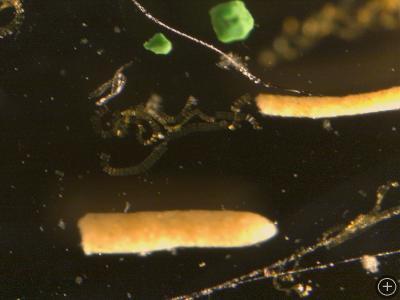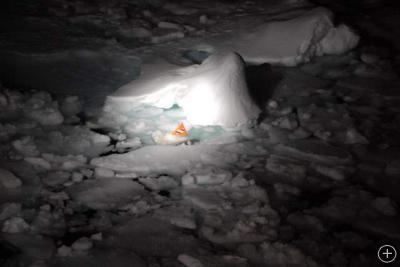The Ocean’s Carbon Content
ICEBERG A43K, SOUTHERN OCEAN– Carbon sedimentation in the water, from its surface towards the ocean floor, is expected to increase around icebergs as a consequence of the chemical and physical environment conducive to plant and animal growth and accumulation.
Phytoplankton maintain their position in surface waters through several mechanisms that increase buoyancy. Under stress, such as that provoked by low nutrient levels in the ocean at the end of summer, the phytoplankton cells sink at several meters per day.
Layers rich in phytoplankton can be found close to the ocean floor, becoming food for benthic animals. A portion of that carbon will be buried in the sediments and lost to the biosphere. Zooplankton swim up and down the water column, eating phytoplankton, and producing fecal pellets which sink tens to hundreds of meters per day, providing a very effective and fast transfer of carbon to the ocean’s depths.
Icebergs can also release minerals, inorganic carbon, and various other particles of interest to characterize this unique environment. All of these different sinking particles can be caught and studied with the appropriate instrumentation.
Ken Smith, Brett Hobson, Alana Sherman and Paul McGill have built unique instrumentation called Langrangian Sediment Traps (LST), to collect the sinking particles around and below the icebergs. These traps are designed to sink below the iceberg, catching particles as they go, and to surface after a pre-determined period of time.
The recovery of an LST can be quite an adventure. High winds and high seas made yesterday’s recovery difficult. After searching for several hours the LST was found in sea ice late in the evening, thanks to Captain Mike Watson who saw it from the ship’s bridge.













Pictures are great as well as tha information